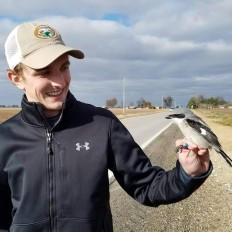Top species
- Yellow-billed Cuckoo (Coccyzus americanus)
- Chuck-will's-widow (Antrostomus carolinensis)
- American Woodcock (Scolopax minor)
- Western Kingbird (Tyrannus verticalis)
- LeConte's Sparrow (Ammospiza leconteii)
- Magnolia Warbler (Setophaga magnolia)
- Blackburnian Warbler (Setophaga fusca)
- Painted Bunting (Passerina ciris)
List up to ca. 25 species that:
• have a limited distribution range and/or are rare on a global level
• are most sought-after by birdwatchers at this site
• and are relatively easy to see at this site (year-round or seasonally)
| Yellow-billed Cuckoo (Coccyzus americanus) | |
| Chuck-will's-widow (Antrostomus carolinensis) | |
| American Woodcock (Scolopax minor) | |
| Western Kingbird (Tyrannus verticalis) | |
| LeConte's Sparrow (Ammospiza leconteii) | |
| Magnolia Warbler (Setophaga magnolia) | |
| Blackburnian Warbler (Setophaga fusca) | |
| Painted Bunting (Passerina ciris) |
Chuck-will's-widow (Antrostomus carolinensis) was added by Rhett Raibley (2021-09-04 00:46:22)
Magnolia Warbler (Setophaga magnolia) was added by Rhett Raibley (2021-09-04 00:45:52)
Western Kingbird (Tyrannus verticalis) was added by Rhett Raibley (2021-09-04 00:45:21)
Blackburnian Warbler (Setophaga fusca) was added by Rhett Raibley (2021-09-04 00:45:05)
Yellow-billed Cuckoo (Coccyzus americanus) was added by Rhett Raibley (2021-09-04 00:44:53)
LeConte's Sparrow (Ammospiza leconteii) was added by Rhett Raibley (2021-09-04 00:44:27)
Painted Bunting (Passerina ciris) was added by Rhett Raibley (2021-09-04 00:44:12)
American Woodcock (Scolopax minor) was added by Rhett Raibley (2021-09-04 00:44:00)


